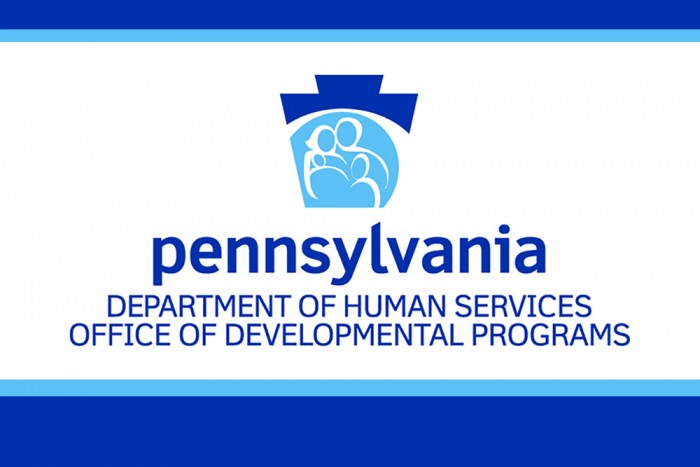The Office of Developmental Programs (ODP) has shared ODPANN 23-061: Now Available Life Sharing Service for Individuals with a Medically Complex Condition (MCC) and Frequently Asked Questions (FAQ). Please review the announcement and FAQ for additional information.
ODP
Latest Self Advocates United as 1 Flyers for July and August Events Now Available

The Office of Developmental Programs (ODP) shared the latest flyers from Self-Advocates United as 1. This includes flyers for Speak Up Saturdays in July and August. You can view the full list below:
- Speak Up Saturdays — July 15, Nanticoke
- Speak Up Saturdays — July 22, Meadville
- SAU1 Let’s Speak Up — July 27, Taylor
- Speak Up Saturdays — July 29, Harrisburg
- Speak Up Saturdays — July 29, Pittsburgh
- Speak Up Saturdays — August 19, Philadelphia
In addition, an event flyer regarding the July listing of Virtual Events has been distributed. You can view the flyer here.
Clarifications and Guidance for the CPS Service in the ID/A Waivers — Webinar on July 20

The Office of Developmental Programs (ODP) has shared ODPANN 23-060: Webinar Opportunity: Clarifications and Guidance for the Community Participation Support (CPS) service in the Intellectual Disability/Autism (ID/A) Waivers. This webinar is scheduled for Thursday, July 20, from 2:00 pm – 3:00 pm, with the intent of providing clarifications for CPS service provision and discussing CPS-related guidance regarding Appendix K.
Please review the announcement for details. Register for the webinar here.
SIS-A® 2nd Ed & Kepro Name Change/Rebrand Announced
The Office of Developmental Programs (ODP) shared the following communication: ODPANN 23-059: Supports Intensity Scale-Adult 2nd Edition (SIS-A 2nd ed) & Kepro Name Change/Rebrand. This announcement discusses the planned release of the SIS-A 2nd Edition and the name change/rebranding of Kepro to Acentra Health.
Please review the announcement for additional information and details related to these changes. If you have any questions, please reach out to your SIS Regional Lead.
Reminder: ODP Requests Providers Participation in National Core Indicators Survey
ODP Announcement 23-049 shares that the Human Services Research Institute (HSRI) has extended the deadline for completing the 2022 National Core Indicators® (NCI) State of the Workforce Survey. The portal will now close on Monday, July 31, 2023.
A national deadline extension has given eligible provider agencies in Pennsylvania an opportunity to complete the NCI State of the Workforce Survey. If your agency has already completed the survey, no additional action is needed.
To obtain a representative sample, HSRI is aiming for a 5% or lower margin of error for each participating state. The lower the margin of error, the more representative and impactful the data will be. Based on current responses, Pennsylvania has a margin of error of 8.4%. The Office of Developmental Programs (ODP) is encouraging providers to complete the survey, which will give stakeholders critical information about workforce metrics.
For any questions, please contact Ms. Lee Stephens, ODP Independent Monitoring for Quality (IM4Q)/NCI Statewide Lead.
ODP Obsoletes Previous COVID-19 Communications With Exceptions

The Office of Developmental Programs (ODP) has shared ODPANN 23-057: Obsoleting Office of Developmental Programs’ (ODP) Coronavirus Disease 2019 (COVID-19) Communication. This notifies stakeholders that COVID-19 communications generated by the Office of Developmental Programs have been obsoleted, with several exceptions. Please review the announcement for additional information and detail.
COVID-19 Outbreak Identification and Reporting Updates Now Available
The Office of Developmental Programs (ODP) has shared ODPANN 23-056: COVID-19 Outbreak Identification and Reporting Updates. The purpose of this announcement is to:
- Draw attention to the updated guidance from the Pennsylvania Department of Health (PA DOH) describing how to identify and report COVID-19 outbreaks originating within the healthcare facility.
- Provide updated guidance to providers of the Office of Developmental Programs’ (ODP) home and community-based services (HCBS) and Private ICF/IDs regarding which facilities may appropriately be considered healthcare settings.
Please review the announcement for additional information.
Updates to Technical Guidance for Claim and Service Documentation Announced
The Office of Developmental Programs (ODP) has shared ODPANN 23-055: Updates to Technical Guidance for Claim and Service Documentation Attachments. This communication announces the release of updated attachments to Bulletin 00-22-03, Technical Guidance for Claim and Service Documentation, to align with waiver changes approved in January 2023.
Please review the announcement, including attachments contained within, for further information and detail.
RCPA Submits Comments to ODP Regarding Proposed Waiver Amendments
Qualification Process for New ID/A Provider Applicants Update
The Office of Developmental Programs (ODP) has shared ODPANN 23-054: Qualification Process for New Intellectual Disability/Autism (ID/A) Provider Applicants Update. The announcement communicates the process for Administrative Entities (AEs) to validate that new Provider Applicants have satisfied all Waiver Provider Qualification requirements effective May 1, 2023.
Please review the announcement for further information on the Provider Applicant Process. You can also download the following templates:












